Welcome to Cosmographia. This post is part of our series on Symbology. For the full map of posts, see here.
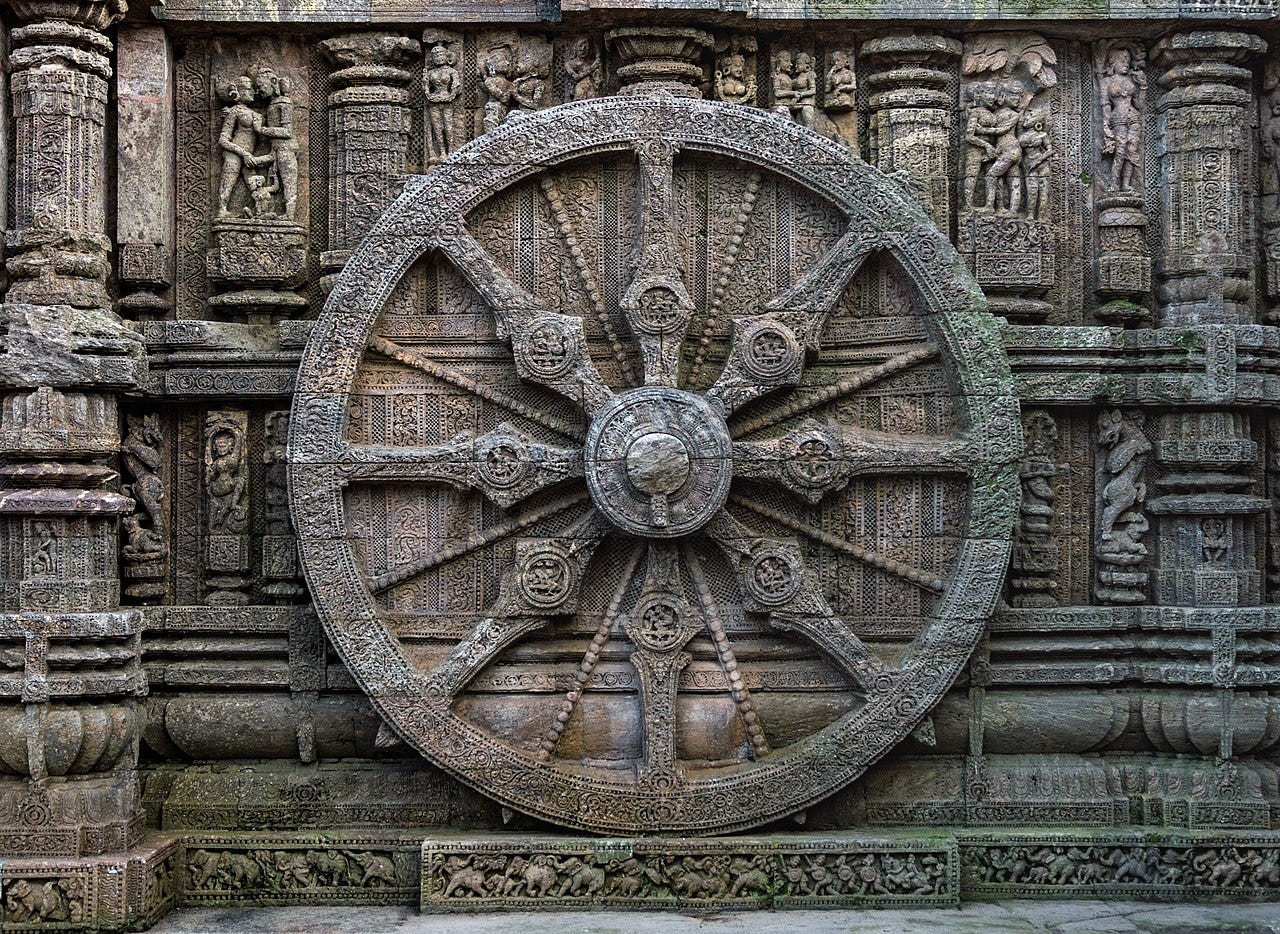
The wheel has proved one of humanity’s most transformative inventions. It’s now so ubiquitous that we can’t imagine a world without it, but in truth it was invented only very recently in human history — only a few centuries before writing and the Great Pyramids of Egypt.
The exact time and place of the first use of the wheel is unclear. For a long time it was supposed a potter’s wheel dug out of the sands of Ur (in modern Iraq) was the first iteration of the technology, but archaeologists have since recovered older solid wooden wheels from western Ukraine, home of the Cucuteni–Trypillia culture, as well as the Indus Valley civilisation in India. No matter where it first originated, within just a few generations the wheel goes from nowhere to appearing everywhere at once, all over Eurasia. In part this explosion was driven by the Yamnaya, the pastoral nomads who erupted out of the Pontic Steppe north of the Black Sea some five thousand years ago. Driving their herds before their wagons, from Eastern Europe to Mongolia, the speakers of the first Indo-European language spread the wheel, their tongue, and their gods across an area spanning some eight thousand kilometres.
One of the Yamnaya daughter cultures, the Afanasievo people of western Mongolia, drew wheeled vehicles among the petroglyphs they carved into the rocks of Central Asia. Not long after, someone on the steppe — possibly the Botai culture, possibly the Yamnaya themselves — domesticated the horse for the first time. Another Yamnaya daughter culture, the Sintashta combined the horse and the wheel with their invention of the chariot four thousand years ago, and the world was never the same again.

Lift up a battle standard in the land. Blow a trumpet among the nations. Consecrate the nations against her. Summon the kingdoms of Ararat, Minni, and Ashkenaz against her. Appoint a commander against her, bring up horses like bristling locusts.
— Jeremiah 51:27
Within a few hundred years of the invention of the war chariot, it had spread all over the ancient world. Such was the ubiquity of the technology, that all horses living today descend from those tamed and bred by the Sintashta four millennia ago. Where their chariots dug ruts in the earth, blood and ruin followed.
The horse-drawn chariot was the most formidable weapon on earth for a thousand years (c. 1700 - 500 BC), evidenced by the fact descendants of the Indo-Iranian Sintashta ruled as kings in Syria (the Mitanni), rode into the jungles of the Indian subcontinent (Indo-Aryans), and ran far enough East to plague the people of what would become China. The technology was soon adopted by their enemies: the Hittites conquered Anatolia riding chariots; Egypt was invaded by a chariot riding people called the Hyksos in the 17th century BC; the Shang dynasty of China had an elite corps of chariot riders; a group of warriors known as the Kassites took Babylonia with their chariots; while the Mycenaeans used the technology to conquer swathes of territory around the Aegean, including a certain city called Troy.
Now the chariots ran freely over the solid ground, now they leapt in the air, while the hearts of the charioteers beat fast as they strove for victory, and they shouted to their horses, flying along in the storm of dust.
— Homer, The Iliad (c. 8th century BC)
Given the pervasiveness, and deadliness, of the wheeled chariot rampaging across the ancient world, perhaps it’s no surprise we see it showing up in the symbology of these cultures too. In many early Indo-European myths, the Sun was imagined as being carried across the sky by a great wheel or a chariot. The ancient Greeks personified our star as Helios, who drove the shining wheel across the sky with his four-horse chariot. A similar image is found in Norse mythology, where the sun goddess Sól and Moon god Mani are pursued across the skies in their respective chariots by the great wolf Fenrir.
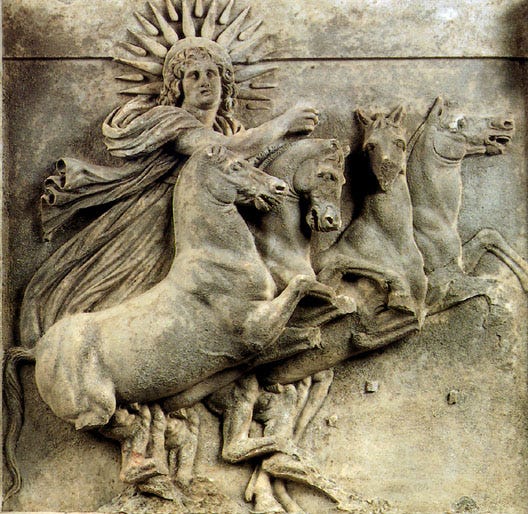
A particularly early European artefact exhibiting this symbology can be found in the Trundholm Sun Chariot — a 3,400 year old Bronze Age figurine from Denmark depicting a horse drawing the solar disk on a wheeled platform. The reverse side of the disc is ungilded, suggesting a cyclical sense of day and night, with the sun’s eternal journey between sky and underworld repeated ad infinitum. Sculptures of ox-carts have been recovered from the Indus Valley Civilisation sites of Daimabad and Harappa, where terracotta model carts appear in the archaeological record as early as 3500 BC. Interestingly, this predates the arrival of the chariot-riding Indo-Aryans, suggesting they might have developed locally rather than diffusing from Central Asia.
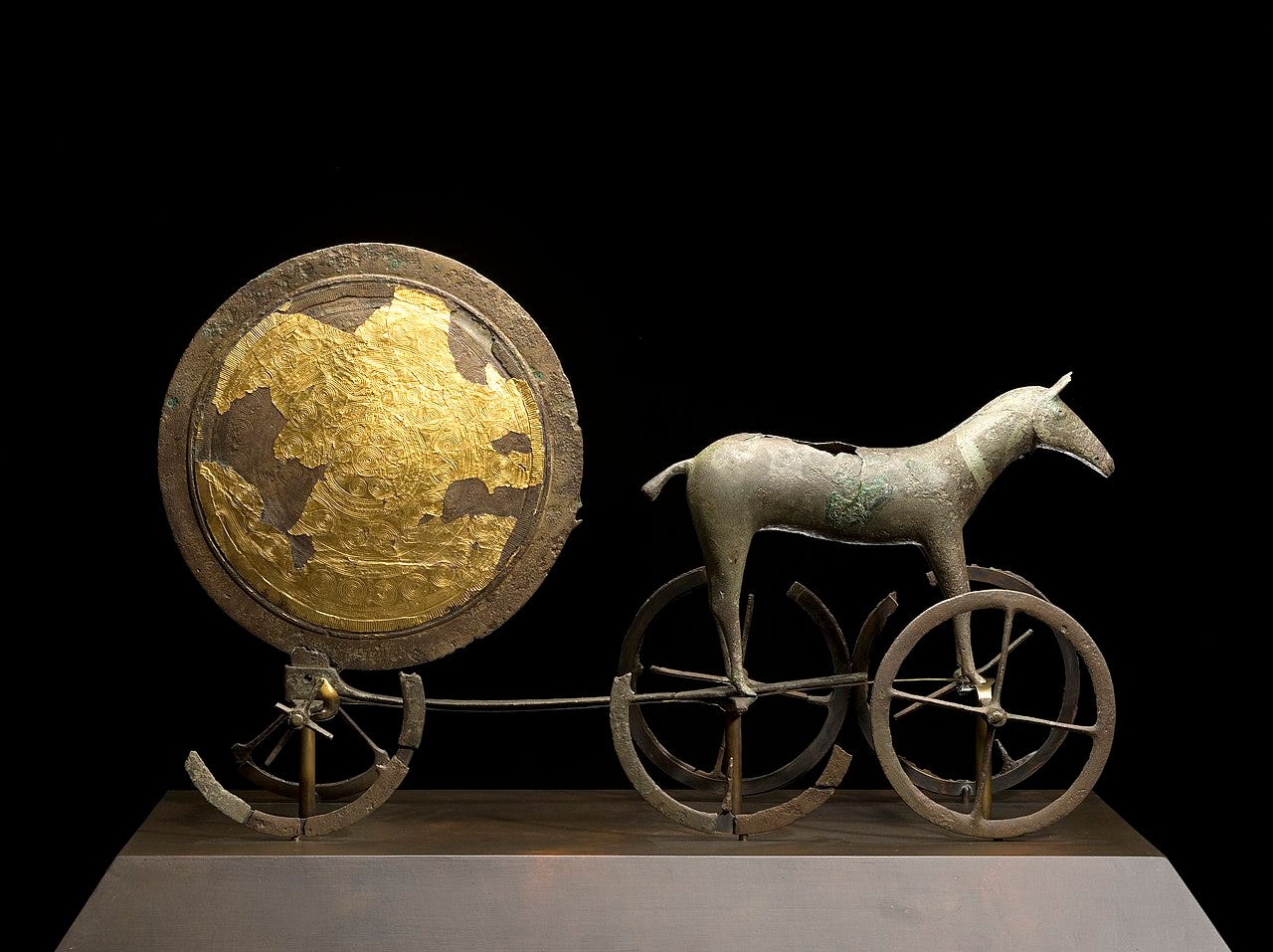
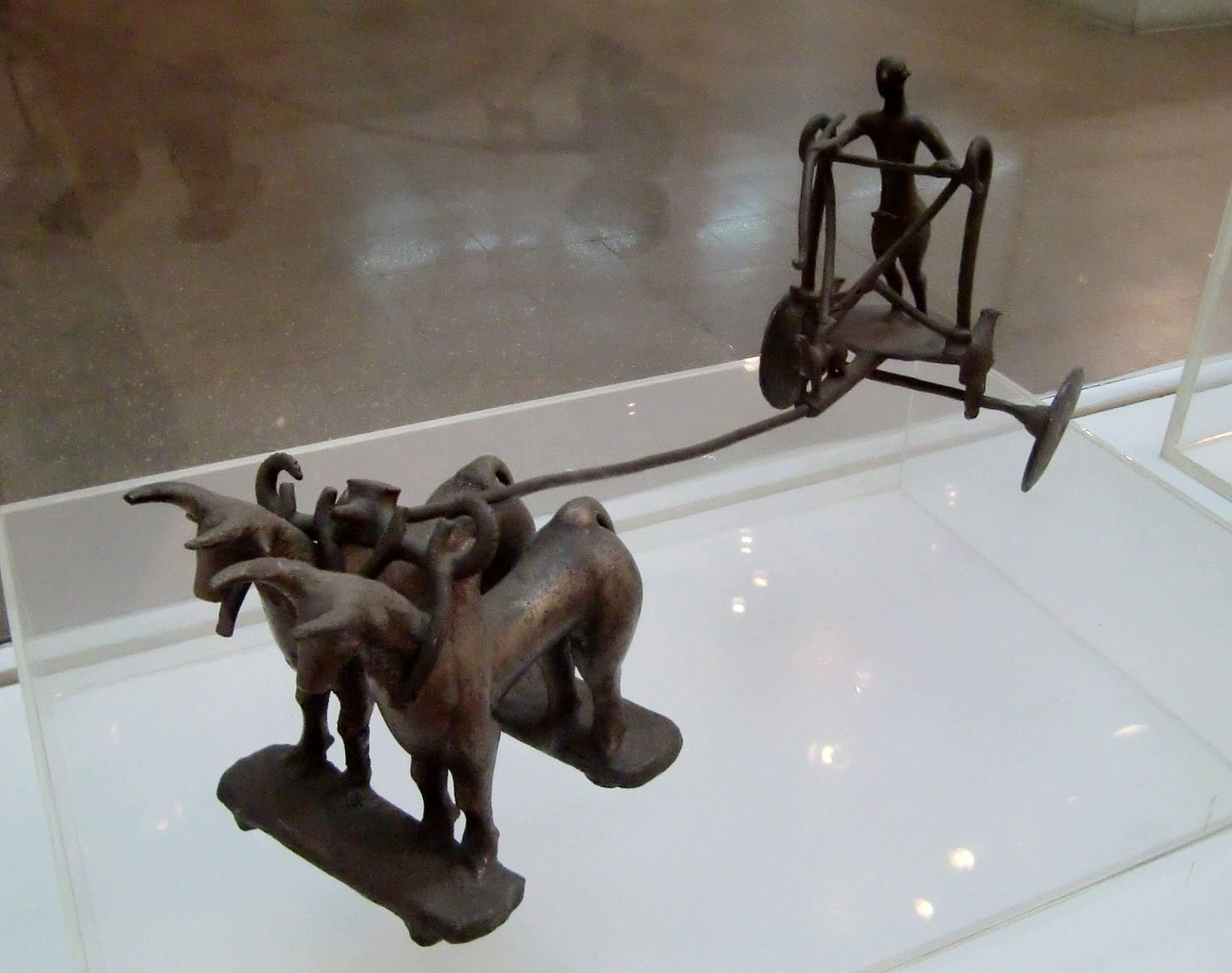
When the Aryans did arrive in India, they brought with them horses and horse-drawn chariots. Around the same time we see the technology, which they called “Ratha”, entering the textual sources of the period. Chariots appear in the Rig Veda, the Puranas, Ramayana, and Mahabharata. A sign of how potent a force the Ratha were in ancient India is the fact that almost all the Hindu deities are described as riding them. The dawn goddess Ushas ushers in each new day upon her chariot; Agni the messenger-fire god flits between the deities of the pantheon in his Ratha; while Surya, the solar deity, is often depicted riding a seven-horse chariot, his steeds representing both the seven colours of visible light and the days of the week. The wheeled carts appear in iconography at Hindu temples across India, and are even used in festivals to carry the murti (icon or statue) of various deities in religious processions.
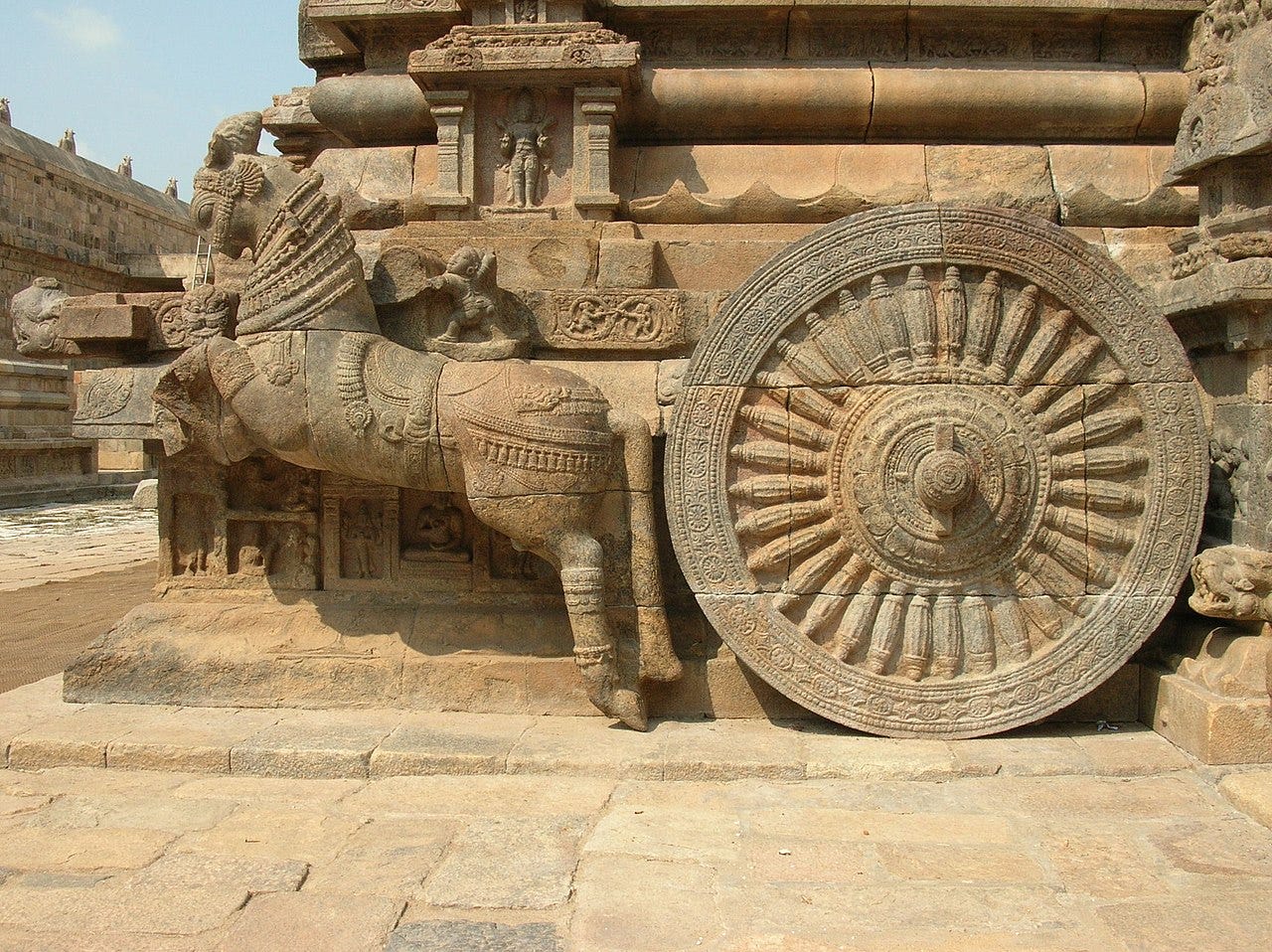
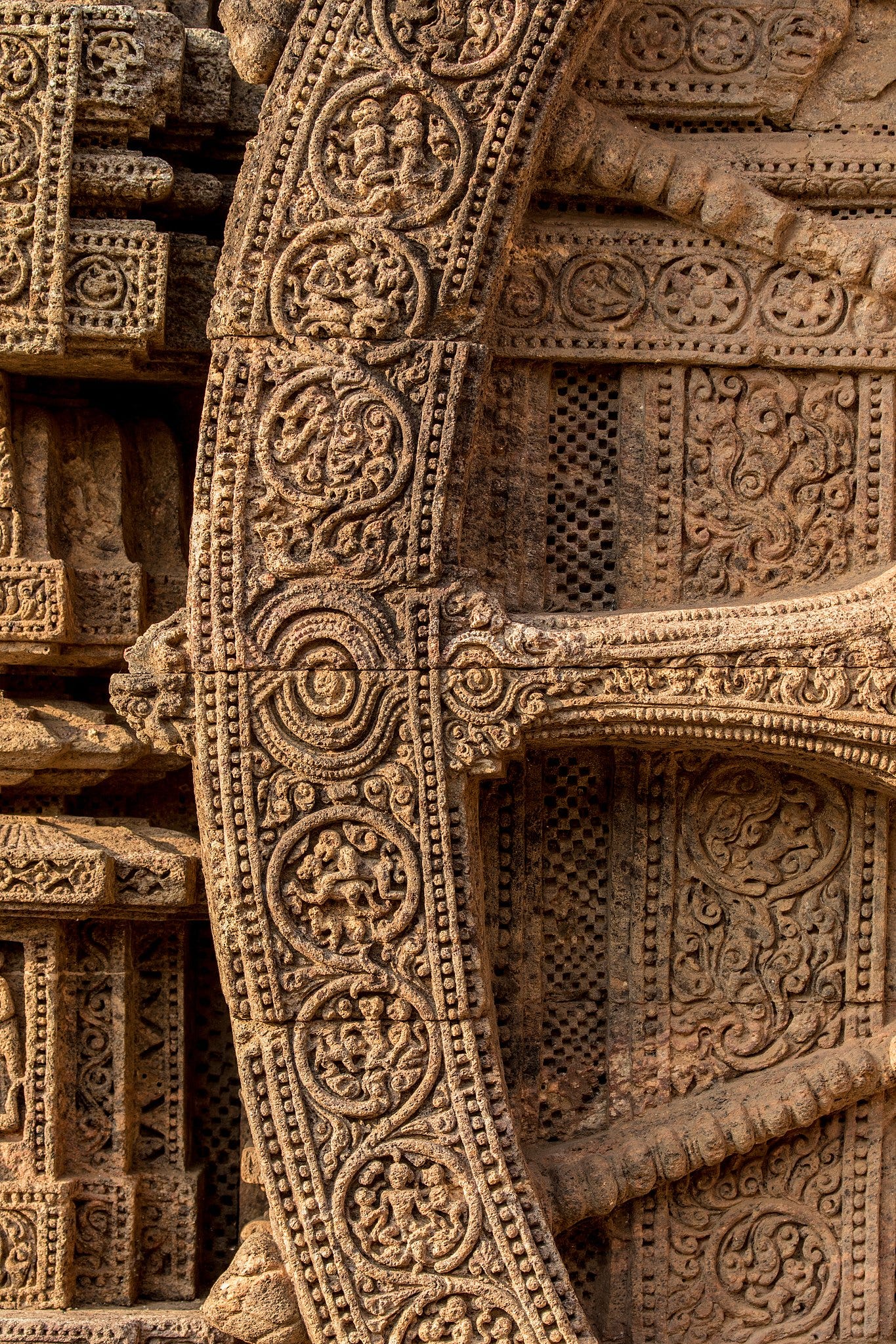
The twelve-spoked wheel, of the true [sun] revolves round the heavens, and never [tends] to decay; seven hundred and twenty children in pais, Agni, abide in it.
— Rig Veda (c. 1500 BC)
The Hindu god Vishnu is typically depicted with four arms, holding his four attributes: a mace; a wheel; a conch; and a lotus flower — representing his power, the Sun, primordial sound, and purity respectively. The Rig Veda identifies his wheel as the Sudarshana Chakra, a divine, flaming discus, which is sometimes interpreted as the ‘wheel of time’ (Kala Chakra). The chakra’s perpetual spinning represents the eternal cycle of creation and destruction. Kings in ancient India aspired to be called Chakravartin (“wheel-turner”), the sovereign who turns the wheel of dharma and rules justly over the world. This concept also refers back to the chariot, with the all-powerful ruler identified with one "whose chariot is rolling everywhere without obstruction.” This is bound up too with the Hindu cosmological concept of samsara — the cycle of birth, death and rebirth, symbolised by a wheel turning endlessly. This idea was shared with other Indian-origin religions, like Buddhism, Jainism, and Sikhism.







